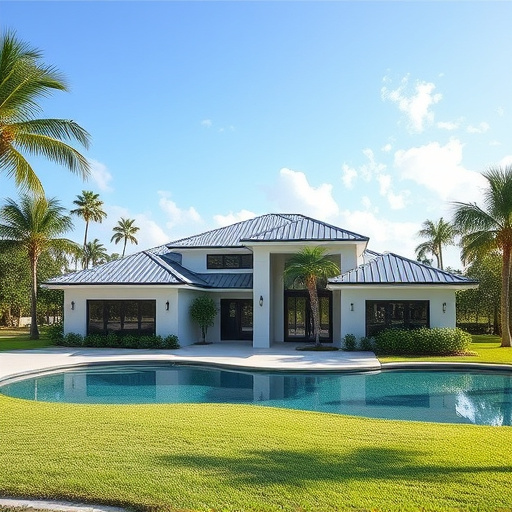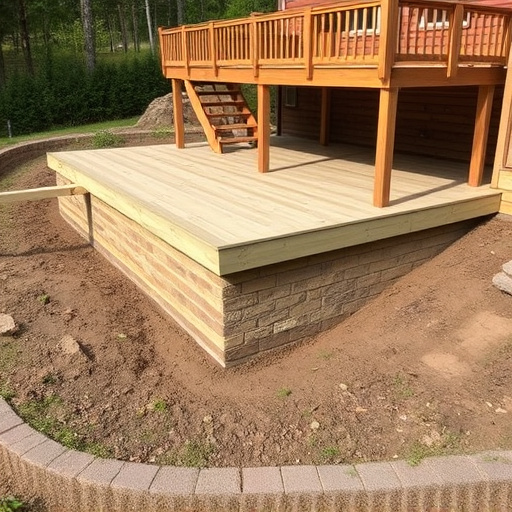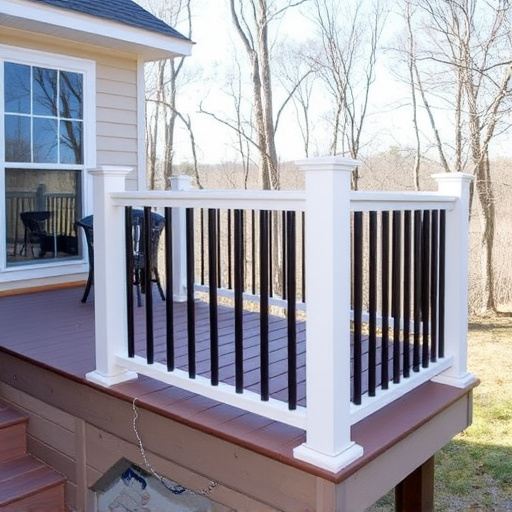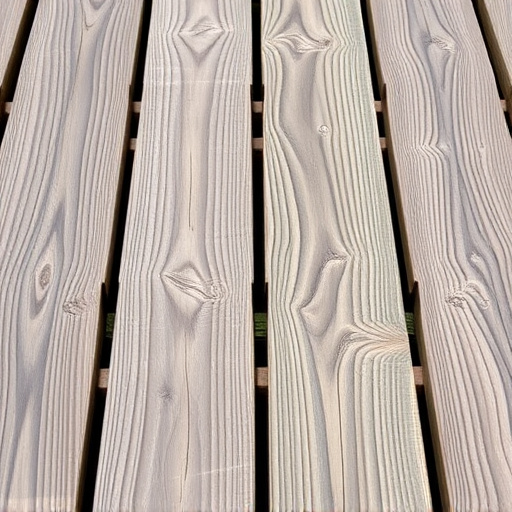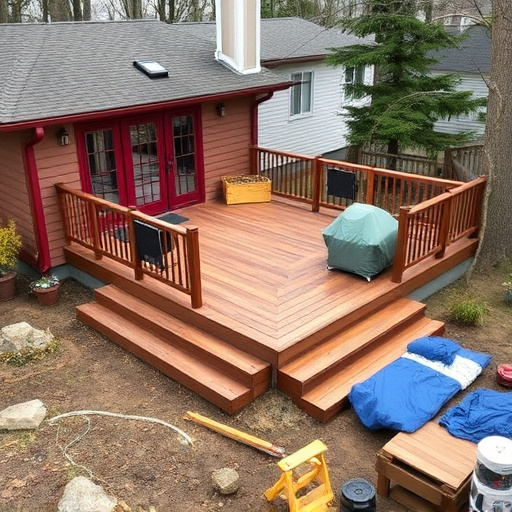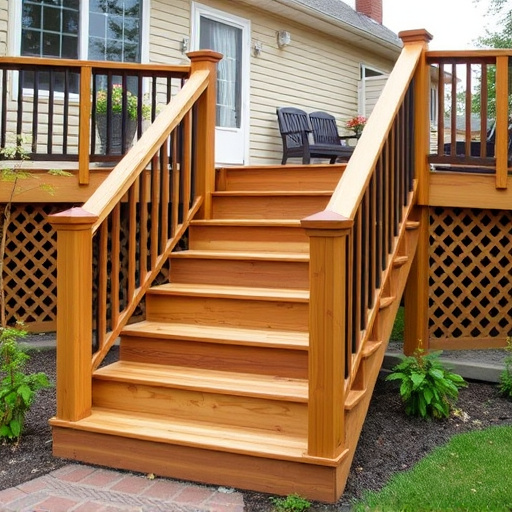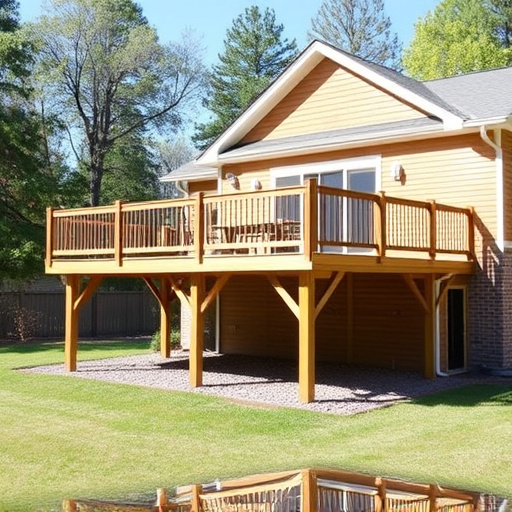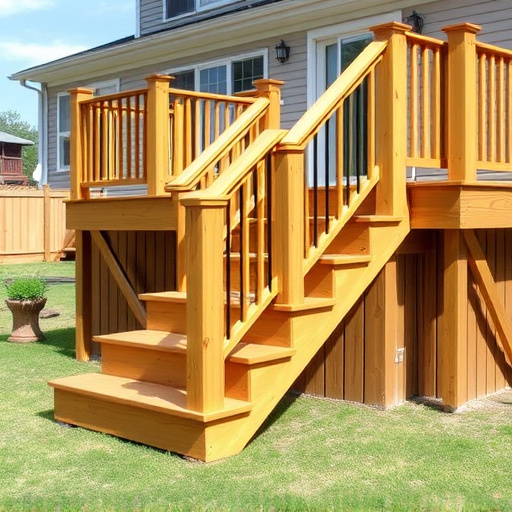Deck builders face significant liability from slip and fall accidents. Water is a primary cause, especially in wet weather conditions. Mitigate risks through regular inspection, maintenance, and prompt storm damage repair. Proper drainage, roofing inspections, and siding/gutter upkeep enhance deck safety and longevity. Using slip-resistant materials like textured rubber or plastic composites during construction prevents accidents and offers long-term savings.
Maintaining slip-resistant decking is crucial for both safety and the longevity of your outdoor space. This comprehensive guide aims to equip deck builders and homeowners with essential knowledge on mitigating slip risks. We’ll explore critical maintenance practices, best materials for durable anti-slip surfaces, and expert tips to ensure safe, low-maintenance decks. By implementing these strategies, you’ll maximize the effectiveness of your decking while prioritizing safety for all users.
- Understanding Slip Risks on Decking Surfaces
- Essential Maintenance Practices for Deck Builders
- Choosing Safe and Durable Slip-Resistant Materials
Understanding Slip Risks on Decking Surfaces

Slip and fall accidents are a significant concern on decking surfaces, potentially leading to serious injuries and legal liabilities for property owners and deck builders alike. Understanding slip risks is the first step in maximizing the safety of your deck. Water is one of the primary contributors to slippery conditions. Rain, snow melt, or even condensation can create a film on the deck’s surface, reducing traction. Deck builders should consider the local climate and choose decking materials with suitable slip-resistant properties for such environments.
Regular inspection and maintenance are crucial in identifying and mitigating slip hazards. Debris, such as leaves and twigs, can accumulate, especially after severe weather events like storms, requiring prompt storm damage repair. Additionally, uneven or worn-out decking boards, damaged rails, and poor lighting can all contribute to slip risks. Deck builders and homeowners should implement a proactive maintenance schedule that includes cleaning, repairing, and replacing components as needed. Also, ensuring proper drainage and addressing issues with siding and gutters will help maintain the deck’s safety and longevity, alongside regular residential roofing inspections.
Essential Maintenance Practices for Deck Builders

Deck builders play a vital role in ensuring the longevity and safety of outdoor structures. To maintain slip-resistant decking, regular cleaning and inspection are essential practices. Deck builders should develop a routine that includes removing debris, dirt, and algae buildup, as these can compromise traction. Using appropriate cleaning solutions and tools will help restore the deck’s natural non-slip properties.
Additionally, deck builders must address any signs of damage or deterioration promptly. Regular siding repairs and replacement, especially around the perimeter, are crucial to maintaining a secure and stable decking system. Similarly, keeping an eye on structural elements like joists and beams, and performing necessary roof replacement or repairs, will contribute to the overall safety and effectiveness of the deck, ensuring it remains a safe and enjoyable space for years to come.
Choosing Safe and Durable Slip-Resistant Materials

When it comes to choosing slip-resistant materials for your decking, safety and durability should be the top priorities. Deck builders have a wide array of options to select from, each with its unique properties and benefits. Opting for high-quality, non-slip surfaces is essential in preventing accidents, especially in residential areas where families and pets frequent the outdoor spaces. Materials such as textured rubber or plastic composites are reliable choices known for their longevity and ability to withstand various weather conditions.
These materials not only provide a safe walking surface but also offer better durability compared to traditional decking options. Additionally, incorporating slip-resistant features during the initial construction phase is cost-effective in the long run, eliminating the need for frequent repairs or replacements. Moreover, considering the overall aesthetic appeal, many modern deck builders find that these materials can enhance the residential roofing and siding services, creating a unified and visually pleasing exterior for any home.
Maintaining slip-resistant decking is not just about enhancing safety; it’s a strategic move for deck builders to ensure their creations stand the test of time. By understanding slip risks, adopting essential maintenance practices, and selecting durable materials, professionals can maximize the effectiveness and longevity of their work, providing clients with safe and reliable outdoor spaces. These measures are crucial for deck builders aiming to deliver high-quality, slip-resistant decking solutions that meet both safety standards and aesthetic appeal.


